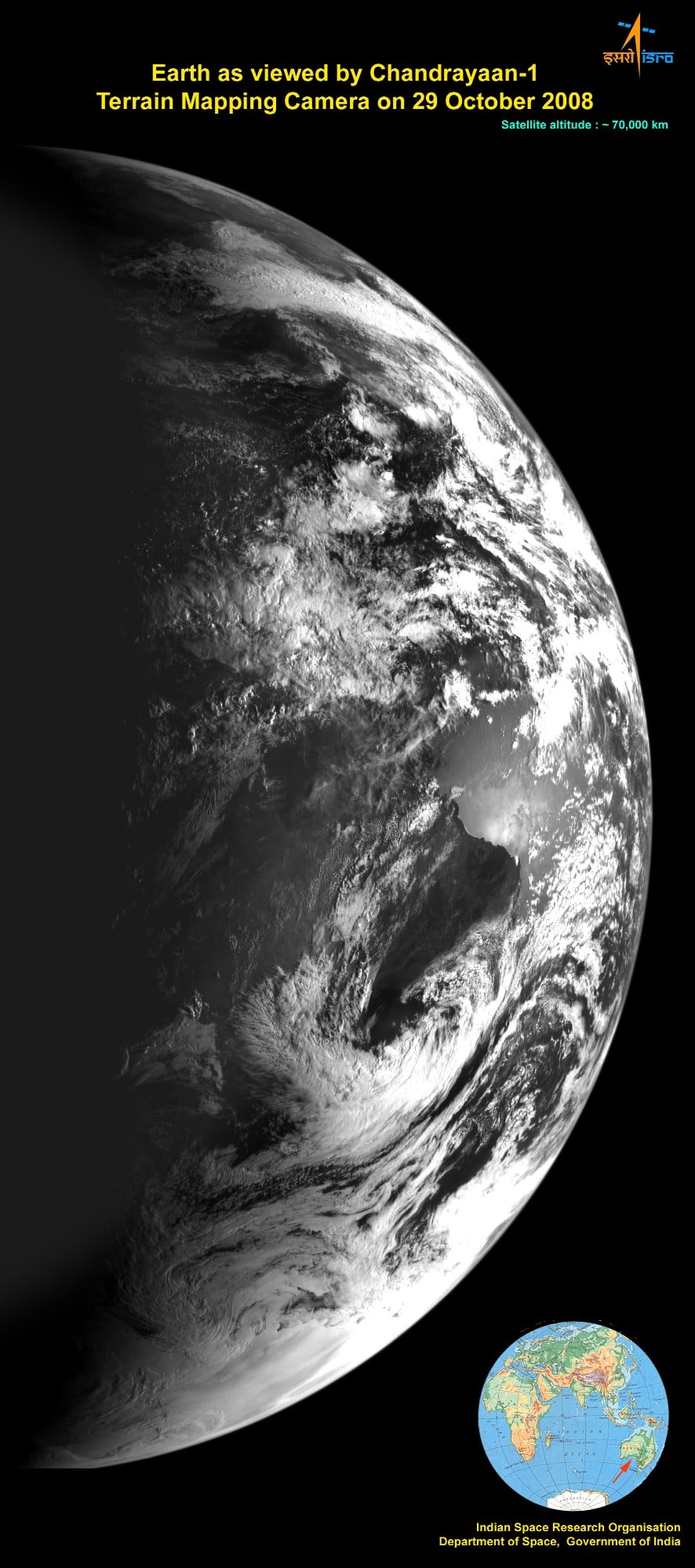[/caption] While the Chandrayaan-1 spacecraft wends its way to the Moon with gradually longer elliptical loops around the Earth, mission scientists decided to test out the main camera on board, the Terrain Mapping camera (TMC). The camera snapped this picture of Earth on October 29, 2008, at a distance of 70,000 km, showing Australia. If you're having a hard time making out the image, it might be because the image is flipped, as though looking at it in a mirror. Emily Lakdawalla over at the
Planetary Society blog
figured this out and has flipped the image for us (see below). Why is the original image backwards? Emily explains, "Data doesn't come down from spacecraft in familiar formats like JPEG or TIFF; it's a stream of ones and zeroes, with a format unique to the science instrument, and scientists and engineers write their own software for translating that into raw image data. There are varying conventions for whether bits are written right or left, and if you take that raw image data and open it up in a piece of off-the-shelf image processing software, the image might be backwards." As Emily says, the error is not really important. The image is beautiful, and gives reason for great anticipation of the first images it will return of the moon.
In the meantime, there's another, closer image of Earth from 9,000 km, too…
Here's the image from 9,000 km:
[caption id="attachment_20550" align="alignnone" width="580" caption="Chandrayaan-1: Earth from 9,000 km. Credit: ISRO"]
[/caption]
TMC is one of the eleven scientific instruments on Chandrayaan-1. The camera can take black and white pictures of an object by recording the visible light reflected from it. The instrument has a resolution of about 5 metres.
And here's
Emily's
"visually correct" version of the original Chandrayaan-1 image:
Chandrayaan-1 will execute one more maneuver to raise its orbit, and send the spacecraft to the vicinity of the moon at a distance of about 384,000 km from the Earth. Once the Chandrayaan-1 spacecraft reaches the vicinity of the Moon, the spacecraft will be slowed sufficiently to enable the gravity of the moon capture it into an elliptical orbit. The spacecraft will make observations from the initial orbit, and then the orbit will be lowered a 100 km circular polar orbit. Following this, the Moon Impact Probe (MIP) will be ejected, impacting the lunar surface. Then the main mission will commensce, with Chandrayaan-1 exploring the moon from orbit with its array of instruments for two years.
More about Chandrayaan-1.
Source: ISRO
 Universe Today
Universe Today
